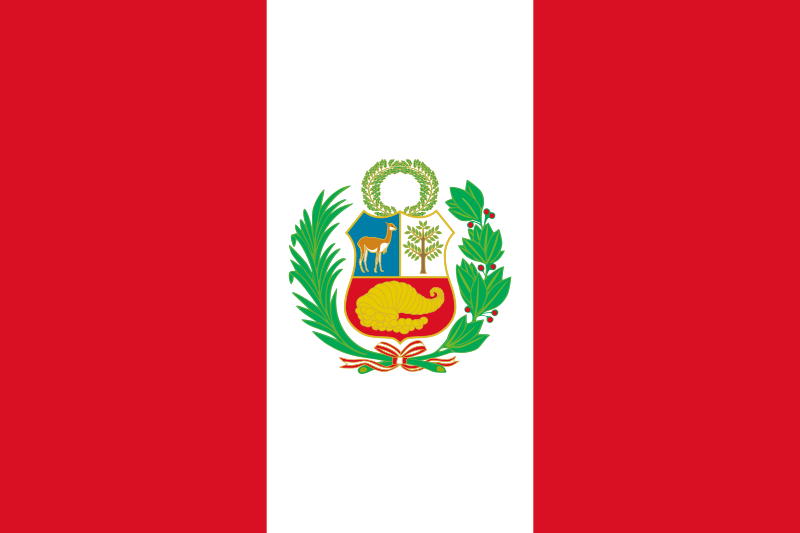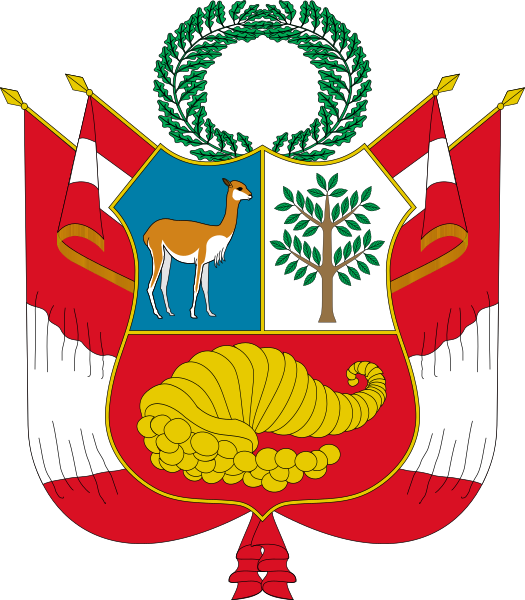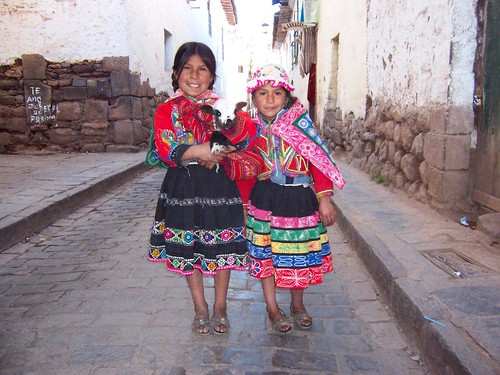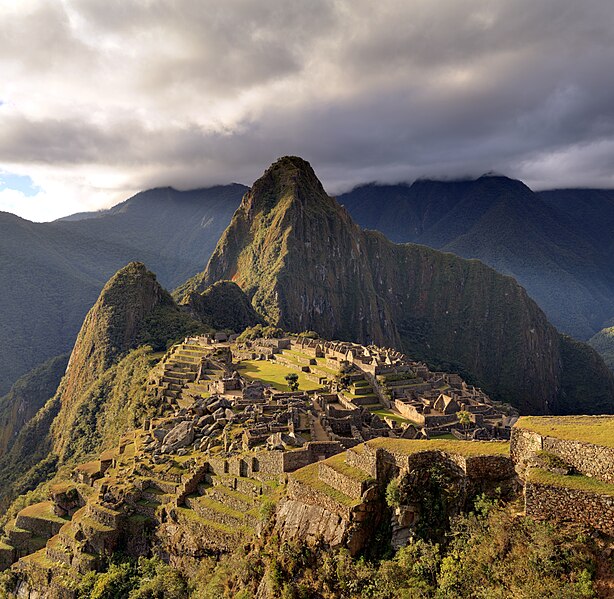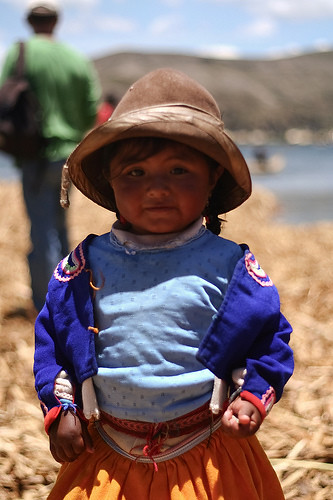Difference between revisions of "Adopting from Peru"
m (Sstubbert moved page Peru to Adopting from Peru) |
(→Adoption Authority) |
||
| (3 intermediate revisions by the same user not shown) | |||
| Line 1: | Line 1: | ||
| − | {{#eimage:http://upload.wikimedia.org/wikipedia/commons/thumb/d/df/Flag_of_Peru_%28state%29.svg/800px-Flag_of_Peru_%28state%29.svg.png|410x579px|thumb|'''The official flag | + | {{#eimage:http://upload.wikimedia.org/wikipedia/commons/thumb/d/df/Flag_of_Peru_%28state%29.svg/800px-Flag_of_Peru_%28state%29.svg.png|410x579px|thumb|'''The official flag.'''<BR/>Source: Wikipedia.org.}} |
| − | {{#eimage:https://www.cia.gov/library/publications/the-world-factbook/graphics/maps/pe-map.gif|410x579px|thumb|'''Map | + | {{#eimage:https://www.cia.gov/library/publications/the-world-factbook/graphics/maps/pe-map.gif|410x579px|thumb|'''Map.'''<BR/>Source: cia.gov.}} |
| − | {{#eimage:https://www.cia.gov/library/publications/the-world-factbook/graphics/locator/soa/pe_large_locator.gif|410x579px|thumb|'''Map | + | {{#eimage:https://www.cia.gov/library/publications/the-world-factbook/graphics/locator/soa/pe_large_locator.gif|410x579px|thumb|'''Map.'''<BR/>Source: cia.gov.}} |
| − | {{#eimage:http://upload.wikimedia.org/wikipedia/commons/thumb/c/cc/Escudo_nacional_del_Per%C3%BA.svg/525px-Escudo_nacional_del_Per%C3%BA.svg.png|410x579px|thumb|'''The official coat of arms | + | {{#eimage:http://upload.wikimedia.org/wikipedia/commons/thumb/c/cc/Escudo_nacional_del_Per%C3%BA.svg/525px-Escudo_nacional_del_Per%C3%BA.svg.png|410x579px|thumb|'''The official coat of arms.'''<BR/>Source: cia.gov.}} |
| − | {{#eimage:http://upload.wikimedia.org/wikipedia/commons/thumb/3/3c/Manu_riverbank.jpg/800px-Manu_riverbank.jpg|410x579px|thumb|'''View of riverbank in Manu National Park, Madre de Dios | + | {{#eimage:http://upload.wikimedia.org/wikipedia/commons/thumb/3/3c/Manu_riverbank.jpg/800px-Manu_riverbank.jpg|410x579px|thumb|'''View of riverbank in Manu National Park, Madre de Dios.'''<BR/>Source: Wikipedia.org.}} |
{{#eimage:http://upload.wikimedia.org/wikipedia/commons/thumb/2/2f/Alpamayo.jpg/800px-Alpamayo.jpg|410x579px|thumb|'''A mountain peak in the Huascarán National Park.'''<BR/>Source: Wikipedia.org.}} | {{#eimage:http://upload.wikimedia.org/wikipedia/commons/thumb/2/2f/Alpamayo.jpg/800px-Alpamayo.jpg|410x579px|thumb|'''A mountain peak in the Huascarán National Park.'''<BR/>Source: Wikipedia.org.}} | ||
| Line 13: | Line 13: | ||
{{#eimage:https://farm3.staticflickr.com/2675/3988940325_43c66337e4.jpg|410x579px|thumb|'''Two Peruvian girls.'''<BR/>Source: flickr.com.}} | {{#eimage:https://farm3.staticflickr.com/2675/3988940325_43c66337e4.jpg|410x579px|thumb|'''Two Peruvian girls.'''<BR/>Source: flickr.com.}} | ||
| − | {{#eimage:http://upload.wikimedia.org/wikipedia/commons/thumb/0/01/80_-_Machu_Picchu_-_Juin_2009_-_edit.2.jpg/614px-80_-_Machu_Picchu_-_Juin_2009_-_edit.2.jpg|410x579px|thumb|'''Machu Picchu | + | {{#eimage:http://upload.wikimedia.org/wikipedia/commons/thumb/0/01/80_-_Machu_Picchu_-_Juin_2009_-_edit.2.jpg/614px-80_-_Machu_Picchu_-_Juin_2009_-_edit.2.jpg|410x579px|thumb|'''Machu Picchu.'''<BR/>Source: Wikipedia.org.}} |
{{#eimage:http://upload.wikimedia.org/wikipedia/commons/thumb/f/f0/Lima_PuebloJov_4.jpg/800px-Lima_PuebloJov_4.jpg|410x579px|thumb|'''Pueblo Joven, picture was taken in southern part of Lima.'''<BR/>Source: Wikipedia.org.}} | {{#eimage:http://upload.wikimedia.org/wikipedia/commons/thumb/f/f0/Lima_PuebloJov_4.jpg/800px-Lima_PuebloJov_4.jpg|410x579px|thumb|'''Pueblo Joven, picture was taken in southern part of Lima.'''<BR/>Source: Wikipedia.org.}} | ||
| − | {{#eimage:http://upload.wikimedia.org/wikipedia/commons/thumb/e/e5/21_-_Lima_-_Ao%C3%BBt_2008.jpg/1230px-21_-_Lima_-_Ao%C3%BBt_2008.jpg|410x579px|thumb|'''The historic city center of Lima | + | {{#eimage:http://upload.wikimedia.org/wikipedia/commons/thumb/e/e5/21_-_Lima_-_Ao%C3%BBt_2008.jpg/1230px-21_-_Lima_-_Ao%C3%BBt_2008.jpg|410x579px|thumb|'''The historic city center of Lima.'''<BR/>Source: Wikipedia.org.}} |
{{#eimage:https://farm4.staticflickr.com/3664/3508955657_aba6ce18f7.jpg|410x579px|thumb|'''A little Peruvian girl.'''<BR/>Source: flickr.com.}} | {{#eimage:https://farm4.staticflickr.com/3664/3508955657_aba6ce18f7.jpg|410x579px|thumb|'''A little Peruvian girl.'''<BR/>Source: flickr.com.}} | ||
| − | |||
| − | + | '''Notice: As of July 14, 2014, all individuals and agencies facilitating [[international]] adoptions must be in compliance with the Intercountry [[Universal Accreditation Act]].''' | |
| − | + | The information contained on this website is for educational purposes only and is not intended to be a substitute for professional legal advice. Always seek the advice of a licensed and qualified professional. While the content of this website is frequently updated, information changes rapidly and therefore, some information may be out of date, and/or contain inaccuracies, omissions or typographical errors. | |
| − | + | =About Peru= | |
| + | Ancient [[Peru]] was the seat of several prominent Andean civilizations, most notably that of the Incas whose empire was captured by Spanish conquistadors in 1533. Peruvian independence was declared in 1821, and remaining Spanish forces were defeated in 1824. After a dozen years of military rule, [[Peru]] returned to democratic leadership in 1980, but experienced economic problems and the growth of a violent insurgency. To learn more please read [[About Peru]]. | ||
| − | |||
| + | =Hague Convention Information= | ||
| − | + | [[Peru]] is party to the Hague Convention on Protection of Children and Co-operation in Respect of Intercountry [[Adoption]]([http://adoption.state.gov/hague_convention/overview.php Hague Adoption Convention]). To learn more please read about [[Peru and the Hague Convention]]. | |
| − | + | ||
| − | + | ||
| − | + | ||
| − | + | ||
| − | + | ||
| − | + | ||
| − | + | ||
| − | + | ||
| − | To | + | |
| − | + | ||
| − | |||
=Who Can Adopt= | =Who Can Adopt= | ||
| − | Adoption between the United States and Peru is governed by the Hague Convention on Adoptions. Therefore to [[adopt]] from Peru, you must first be found eligible to [[adopt]] by the U.S. Government. The U.S. Government agency responsible for making this determination is the Department of Homeland Security, U.S. Citizenship and Immigration Services (USCIS). [http://adoption.state.gov/adoption_process/who_can_adopt/eligibility.php Learn more]. | + | [[Adoption]] between the United States and [[Peru]] is governed by the Hague Convention on Adoptions. Therefore to [[adopt]] from [[Peru]], you must first be found eligible to [[adopt]] by the U.S. Government. The U.S. Government agency responsible for making this determination is the Department of Homeland Security, U.S. Citizenship and Immigration Services (USCIS). [http://adoption.state.gov/adoption_process/who_can_adopt/eligibility.php Learn more]. To learn more please read about [[Who Can Adopt from Peru]]. |
| − | |||
| − | |||
| − | |||
| − | |||
| − | |||
| − | |||
| − | |||
| − | |||
| − | |||
| − | |||
| − | |||
| − | |||
| − | |||
| − | |||
| − | |||
| − | |||
| − | |||
| − | |||
| − | |||
| − | |||
| − | |||
| − | |||
=Who Can Be Adopted= | =Who Can Be Adopted= | ||
| − | + | To learn about eligibility requirements for [[adoption]] in [[Peru]] please read [[Who Can Be Adopted from Peru]]. | |
| − | |||
| − | |||
| − | |||
| − | |||
| − | |||
| − | |||
| − | |||
| − | |||
| − | |||
=How to Adopt= | =How to Adopt= | ||
| − | '''WARNING:''' Peru is party to the Hague Adoption Convention. Do not [[adopt]] or obtain [[Legal Custody|legal custody]] of a child in Peru before U.S. consular officer issues an “Article 5/17 Letter” in the case. Read on for more information. | + | '''WARNING:''' [[Peru]] is party to the Hague [[Adoption]] Convention. Do not [[adopt]] or obtain [[Legal Custody|legal custody]] of a child in [[Peru]] before U.S. consular officer issues an “Article 5/17 Letter” in the case. Read on for more information. |
==Adoption Authority== | ==Adoption Authority== | ||
| − | '''Peru's Adoption Authority''' | + | '''[[Peru]]'s [[Adoption]] Authority''' |
| − | + | [[Peru]]’s Central Authority for Adoptions is the Dirección General de Adopciones (DGA) within the Ministry of Women and Vulnerable Populations (MIMP). Only DGA can certify cases as Convention compliant. | |
| − | '''NOTE:''' If any of the following occurred prior to April 1, 2008 (the date on which the Hague Adoption Convention entered into force with respect to the United States), the Hague Adoption Convention may not apply to your adoption: 1) you filed a Form [[I-600A]] identifying Peru as the country where you intended to [[adopt]]; 2) you filed a Form [[I-600]]; or; 3) the adoption was completed. Under these circumstances, your [[adopted]] child’s visa application could continue to be processed in accordance with the immigration regulations for non-Convention adoptions. For more information, read about [ | + | '''NOTE:''' If any of the following occurred prior to April 1, 2008 (the date on which the Hague [[Adoption]] Convention entered into force with respect to the United States), the Hague [[Adoption]] Convention may not apply to your [[adoption]]: 1) you filed a Form [[I-600A]] identifying [[Peru]] as the country where you intended to [[adopt]]; 2) you filed a Form [[I-600]]; or; 3) the [[adoption]] was completed. Under these circumstances, your [[adopted]] child’s visa application could continue to be processed in accordance with the immigration regulations for non-Convention adoptions. For more information, read about [https://travel.state.gov/content/travel/en/Intercountry-Adoption/Adoption-Process/how-to-adopt/hague-transition-cases.html Transition Cases]. |
| − | + | ||
==The Process== | ==The Process== | ||
| − | Because Peru is party to the Hague Adoption Convention, adopting from Peru must follow a specific process designed to meet the Convention’s requirements. A brief summary of the Convention adoption process is given below. You must complete these steps in the following order to meet all necessary legal requirements. Adoptions completed out of order may result in the child not being eligible for an immigrant visa to the United States. | + | Because [[Peru]] is party to the Hague [[Adoption]] Convention, adopting from [[Peru]] must follow a specific process designed to meet the Convention’s requirements. A brief summary of the Convention [[adoption]] process is given below. You must complete these steps in the following order to meet all necessary legal requirements. Adoptions completed out of order may result in the child not being eligible for an immigrant visa to the United States. |
| Line 111: | Line 68: | ||
# Apply to be Found Eligible to [[Adopt]] | # Apply to be Found Eligible to [[Adopt]] | ||
# Be matched with a Child | # Be matched with a Child | ||
| − | # Apply for the child to be found eligible for adoption | + | # Apply for the child to be found eligible for [[adoption]] |
| − | # [[Adopt]] (or Obtain [[Legal Custody]]) of the child in Peru | + | # [[Adopt]] (or Obtain [[Legal Custody]]) of the child in [[Peru]] |
# Bring your child home | # Bring your child home | ||
| + | To learn more about this process please read [[How to Adopt from Peru]]. | ||
| − | |||
| − | |||
| − | |||
| − | |||
| − | |||
| − | |||
| − | |||
| − | |||
| − | |||
| − | |||
| − | |||
| − | |||
| − | |||
| − | |||
| − | |||
| − | |||
| − | |||
| − | |||
| − | |||
| − | |||
| − | |||
| − | |||
| − | |||
| − | |||
| − | |||
| − | |||
| − | |||
| − | |||
| − | |||
| − | |||
| − | |||
| − | |||
| − | |||
| − | |||
| − | |||
| − | |||
| − | |||
| − | |||
| − | |||
| − | |||
| − | |||
| − | |||
| − | |||
| − | |||
| − | |||
| − | |||
| − | |||
| − | |||
| − | |||
| − | |||
| − | |||
| − | |||
| − | |||
| − | |||
| − | |||
| − | |||
| − | |||
| − | |||
| − | |||
| − | |||
| − | |||
| − | |||
| − | |||
| − | |||
| − | |||
| − | |||
| − | |||
=Traveling Abroad= | =Traveling Abroad= | ||
| Line 188: | Line 79: | ||
'''Applying for Your U.S. Passport''' | '''Applying for Your U.S. Passport''' | ||
| − | A valid U.S. passport is required to enter and leave Peru. Only the U.S. Department of State has the authority to grant, issue, or verify U.S. passports. Getting or renewing a passport is easy. | + | A valid U.S. passport is required to enter and leave [[Peru]]. Only the U.S. Department of State has the authority to grant, issue, or verify U.S. passports. Getting or renewing a passport is easy. To learn more please read about [[Traveling Abroad in Peru]]. |
| − | + | ||
| − | + | ||
| − | + | ||
| − | + | ||
| − | + | ||
| − | + | ||
| − | + | ||
| − | + | ||
| − | + | ||
| − | + | ||
| − | + | ||
| − | + | ||
| − | + | ||
| − | |||
=After Adoption= | =After Adoption= | ||
| Line 224: | Line 101: | ||
| − | + | =Contact Information= | |
| − | '''U.S. Embassy in Peru''' | + | '''U.S. Embassy in [[Peru]]''' |
Consular Section- Immigrant Visas | Consular Section- Immigrant Visas | ||
Avenida La Encalada, Cuadra 17 s/n | Avenida La Encalada, Cuadra 17 s/n | ||
| − | Monterrico, Surco, Lima 33 Peru | + | Monterrico, Surco, Lima 33 [[Peru]] |
Website: [http://lima.usembassy.gov/ U.S. Embassy Peru] | Website: [http://lima.usembassy.gov/ U.S. Embassy Peru] | ||
Email: LimaIV@state.gov | Email: LimaIV@state.gov | ||
| − | ''' | + | '''[[Peru]]’s [[Adoption]] Authority''' |
Ministerio de la Mujer y Poblaciones Vulnerables (MIMP) | Ministerio de la Mujer y Poblaciones Vulnerables (MIMP) | ||
Dirección General de Adopciones (DGA) | Dirección General de Adopciones (DGA) | ||
Av. Benavides 1155 | Av. Benavides 1155 | ||
| − | Miraflores, Lima 18 Peru | + | Miraflores, Lima 18 [[Peru]] |
Tel: (51) (1) 416-5431 | Tel: (51) (1) 416-5431 | ||
Website: [http://www.mimp.gob.pe Peru's Adoption Authority] | Website: [http://www.mimp.gob.pe Peru's Adoption Authority] | ||
| − | '''Embassy of Peru''' | + | '''Embassy of [[Peru]]''' |
Consular Section | Consular Section | ||
| Line 256: | Line 133: | ||
| − | '''NOTE:''' PERU has consulates in Atlanta, Boston, Chicago, Dallas, Denver, Hartford, Houston, Los Angeles, Miami, Paterson, [[New York]] City, and San Francisco. | + | '''NOTE:''' [[Peru|PERU]] has consulates in Atlanta, Boston, Chicago, Dallas, Denver, Hartford, Houston, Los Angeles, Miami, Paterson, [[New York]] City, and San Francisco. |
| Line 277: | Line 154: | ||
==SOURCE== | ==SOURCE== | ||
| − | '''Intercountry [[Adoption]], Bureau of Consular Affairs. U.S. Department of State Country Information'''[ | + | '''Intercountry [[Adoption]], Bureau of Consular Affairs. U.S. Department of State Country Information''' [[adoption]].state.gov/country_information/country_specific_info.php?country-select=[[peru]] |
[[Category: International Adoption]] | [[Category: International Adoption]] | ||
Latest revision as of 14:03, 16 June 2021
Notice: As of July 14, 2014, all individuals and agencies facilitating international adoptions must be in compliance with the Intercountry Universal Accreditation Act.
The information contained on this website is for educational purposes only and is not intended to be a substitute for professional legal advice. Always seek the advice of a licensed and qualified professional. While the content of this website is frequently updated, information changes rapidly and therefore, some information may be out of date, and/or contain inaccuracies, omissions or typographical errors.
Contents
About Peru
Ancient Peru was the seat of several prominent Andean civilizations, most notably that of the Incas whose empire was captured by Spanish conquistadors in 1533. Peruvian independence was declared in 1821, and remaining Spanish forces were defeated in 1824. After a dozen years of military rule, Peru returned to democratic leadership in 1980, but experienced economic problems and the growth of a violent insurgency. To learn more please read About Peru.
Hague Convention Information
Peru is party to the Hague Convention on Protection of Children and Co-operation in Respect of Intercountry Adoption(Hague Adoption Convention). To learn more please read about Peru and the Hague Convention.
Who Can Adopt
Adoption between the United States and Peru is governed by the Hague Convention on Adoptions. Therefore to adopt from Peru, you must first be found eligible to adopt by the U.S. Government. The U.S. Government agency responsible for making this determination is the Department of Homeland Security, U.S. Citizenship and Immigration Services (USCIS). Learn more. To learn more please read about Who Can Adopt from Peru.
Who Can Be Adopted
To learn about eligibility requirements for adoption in Peru please read Who Can Be Adopted from Peru.
How to Adopt
WARNING: Peru is party to the Hague Adoption Convention. Do not adopt or obtain legal custody of a child in Peru before U.S. consular officer issues an “Article 5/17 Letter” in the case. Read on for more information.
Adoption Authority
Peru’s Central Authority for Adoptions is the Dirección General de Adopciones (DGA) within the Ministry of Women and Vulnerable Populations (MIMP). Only DGA can certify cases as Convention compliant.
NOTE: If any of the following occurred prior to April 1, 2008 (the date on which the Hague Adoption Convention entered into force with respect to the United States), the Hague Adoption Convention may not apply to your adoption: 1) you filed a Form I-600A identifying Peru as the country where you intended to adopt; 2) you filed a Form I-600; or; 3) the adoption was completed. Under these circumstances, your adopted child’s visa application could continue to be processed in accordance with the immigration regulations for non-Convention adoptions. For more information, read about Transition Cases.
The Process
Because Peru is party to the Hague Adoption Convention, adopting from Peru must follow a specific process designed to meet the Convention’s requirements. A brief summary of the Convention adoption process is given below. You must complete these steps in the following order to meet all necessary legal requirements. Adoptions completed out of order may result in the child not being eligible for an immigrant visa to the United States.
- Choose an Accredited Adoption Service Provider
- Apply to be Found Eligible to Adopt
- Be matched with a Child
- Apply for the child to be found eligible for adoption
- Adopt (or Obtain Legal Custody) of the child in Peru
- Bring your child home
To learn more about this process please read How to Adopt from Peru.
Traveling Abroad
Applying for Your U.S. Passport
A valid U.S. passport is required to enter and leave Peru. Only the U.S. Department of State has the authority to grant, issue, or verify U.S. passports. Getting or renewing a passport is easy. To learn more please read about Traveling Abroad in Peru.
After Adoption
What resources are available to assist families after the adoption?
Many adoptive parents find it important to find support after the adoption. Take advantage of all the resources available to your family -- whether it's another adoptive family, a support group, an advocacy organization, or your religious or community services.
Here are some good places to start your support group search:
Child Welfare Information Gateway
North American Council on Adoptable Children
NOTE: Inclusion of non-U.S. Government links does not imply endorsement of contents.
Contact Information
U.S. Embassy in Peru
Consular Section- Immigrant Visas Avenida La Encalada, Cuadra 17 s/n Monterrico, Surco, Lima 33 Peru Website: U.S. Embassy Peru Email: LimaIV@state.gov
Ministerio de la Mujer y Poblaciones Vulnerables (MIMP) Dirección General de Adopciones (DGA) Av. Benavides 1155 Miraflores, Lima 18 Peru Tel: (51) (1) 416-5431 Website: Peru's Adoption Authority
Embassy of Peru
Consular Section 1700 Massachusetts Ave. NW Washington, DC 20036 Tel: (202) 833-9860 to 9869 Fax: (202) 659-8124 Website: Embassy of Peru Email: webadmin@embassyofperu.us
NOTE: PERU has consulates in Atlanta, Boston, Chicago, Dallas, Denver, Hartford, Houston, Los Angeles, Miami, Paterson, New York City, and San Francisco.
Office of Children’s Issues
U.S. Department of State SA-17A 2201 C Street, NW Washington, DC 20520 Tel: 1-888-407-4747 Website: U.S. Department of State Email: AskCI@state.gov
U.S. Citizenship and Immigration Services (USCIS)
For questions about immigration procedures, contact the National Customer Service Center (NCSC) at 1-800-375-5283 (TTY 1-800-767-1833).
SOURCE
Intercountry Adoption, Bureau of Consular Affairs. U.S. Department of State Country Information adoption.state.gov/country_information/country_specific_info.php?country-select=peru
